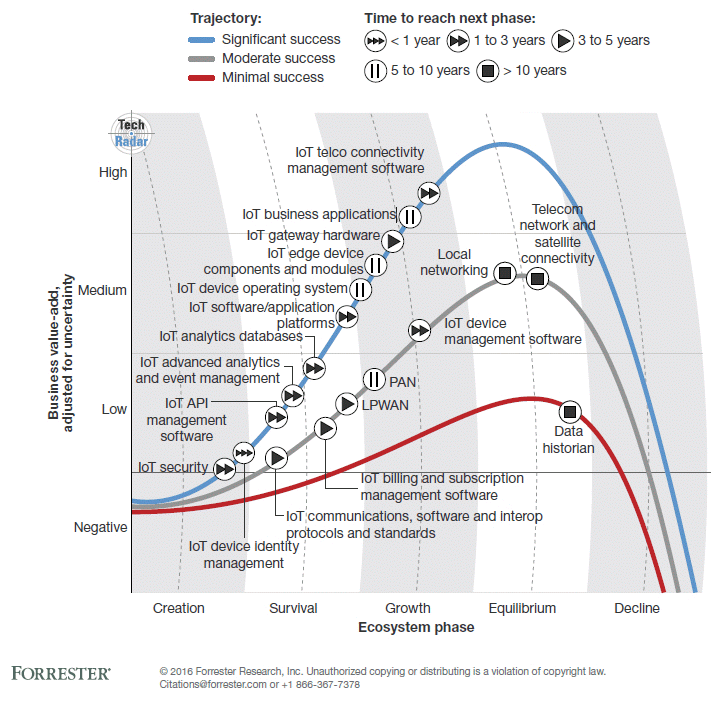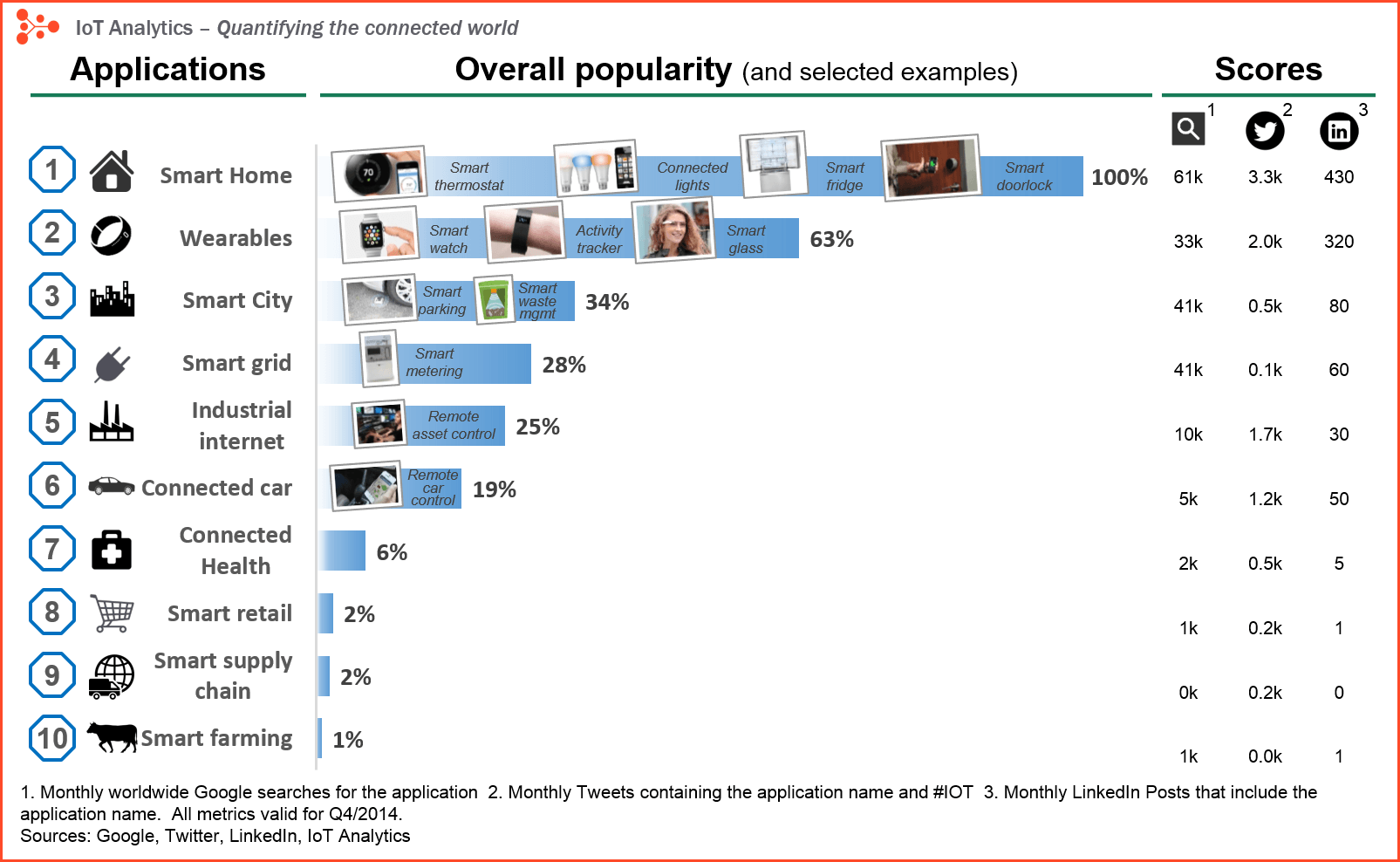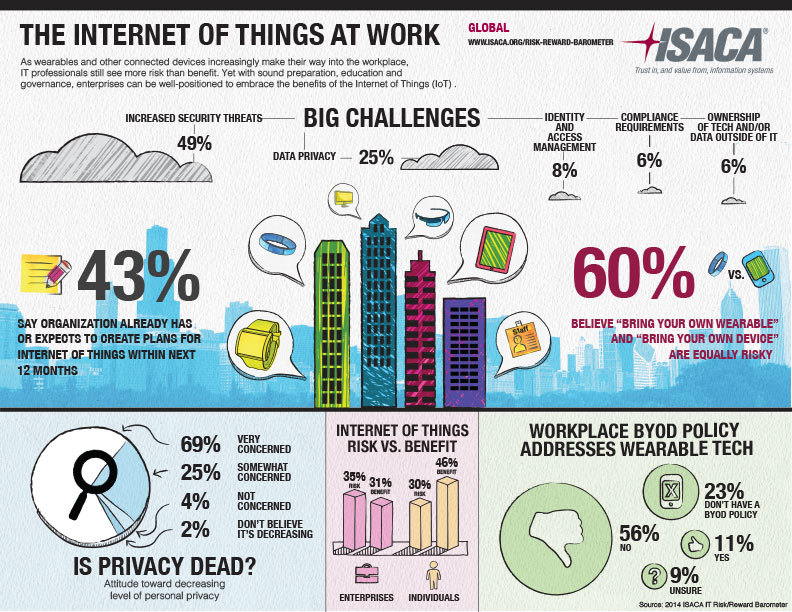The Internet of Things (IoT): forecasts from Forrester, Machina Research, the World Economic Forum (WEF), Gartner and IDC

The Internet of Things (IoT) , it would seem, was born quite recently, in the early 2010s, but recently it has become the talk of the town (or “buzz-word”) that no significant event from the IT world does not do without mentioning it.
Because it is strange that the news published on the Forbes website and dedicated to IoT went unnoticed on the GT. To fill this gap, we present to readers a Russian-language translation of an article published in January on the journal’s website. Under the cut, you will learn a lot of interesting things, both about the forecasts of the IoT market development in numbers, and about the security implications associated with such a rapid growth of the Internet of Things, and the emerging black market.
From a translator: it is sometimes difficult to find an analogue of some foreign terms in the Russian language, so I would be extremely grateful if you, dear readers, can help and correct the translation of this article, where necessary. Also, all the pictures at the request of workers are clickable.
')
Foreword
For the third year in a series of Internet of Things ( approx. The Internet of Things or simply IoT ) becomes the main topic at CES ( approx. The last one was held in January 2016 ). More than 900 companies from 3800 who took part in this show, addressed their products to the Internet of Things. Many company representatives say this: “IoT is experiencing a real boom now, turning from a dream into a reality.”
However, there are dissenters. So, for example, Andrew Tarantola (Andrew Tarantola) from Engadget thinks that “IoT is mired in smart lamps connected via Internet cameras and wireless speakers. We saw the same small technique even when the term itself was just introduced into circulation. ” Pam Baker from FierceBigData also complains: “IoT data processing products work again and again at full capacity, many, frankly, do not cope, and the same problems with a huge flow of data from devices remain unsolved.”

A source
So what is the current state of IoT and where is it going? Summary information and forecasts from leading analytical companies Forrester , Machina Research , the World Economic Forum (WEF) , Gartner and IDC are presented on the CWPP. Below are detailed forecasts.
Forrester Forecasts
In a new report for TechRadar , Forrester claims that "IoT technologies are, by and large, diverse and immature." Most of the 19 IoT technologies are defined in the report as currently in the “Survival and Growth” stage. The development of standards and the creation of a reliable security system are the key to their success: “Standards are still in their infancy, as sellers have been dealing with this issue for only a couple of years. And the security technologies in IoT are still in the development stage without being used in specific products. ”
Forrester says that IoT is a “business trend,” while the report says that 23% of companies are already using IoT, and 29% plan to use it next year. They, companies and firms, use IoT to transform their business model, moving from one-time product operations to product-as-a-service relationships and optimizing the use of physical and financial resources, as well as creating new forms of attracting users and customers.
In the forecast for 2016, Forrester saw the following in his magic ball:
- At least one company will train Wall Street investors on how to trace the evolution from product to revenue from services. For example, Adobe and Microsoft have already switched to selling software as a service ( software-as-a-service, SaaS );
- Corporate customers and consumers will automatically ask the sellers about the capabilities of the sensors in the mobile application of the product when purchasing a new machine or refrigerator;
- One or more companies will report the number of connected products they use in working with customers, as well as the number of connected customers;
- IoT will create huge amounts of time series data and its analytics will become a specialized discipline in data analysis;
- Insurance companies may begin to promote special types of insurance (discounted) for smart homes;
- 10% of drivers will use "apssessoris" ("appcessories", note: "in Russian it will sound like accessories" ) - devices for cars with access to the network via a smartphone, which will allow to introduce new technologies into relatively old cars.

A source
Machina Research Forecasts
- We will feel the first heartbeat of the new IoT economy and the shift from selling products to providing services. So at least one Fortune 500 company will completely change its perception of profit and trade based on the data generated by IoT;
- Pushing through IoT will affect higher levels of company management. At least one Fortune 500 company will hire a top-level executive over the Internet of Things;
- Corrective analytics — as a security option for automatically adjusting settings based on actual results in real time, rather than actions that are not predicted in advance — will be a fail-safe and secure approach for a number of sectors;
- The nominal name in IoT will be “bankruptcy”, while at least one company will be bought at a price that is 100 times more than revenue;
- At least one of the core technologies of Low-Power, Wide-Area (LPWA) will become redundant, and technologies in general will become more and more fragmented;
- Chinese players will shake up the IoT landscape by expanding and significantly busy increasing market share in areas such as semiconductors, software platforms, deploying intelligent cities, and, especially, integrated solutions;
- Digital twins and digital avatars will breed, real-world virtualization will be an incredibly popular technology, and augmented reality will come out of its niche and be more widely used;
- We are not expecting any meaningful commercial implementations of IoT that are based on Blockchain ;
- At least one main IoT player will face face to face with significant regulatory issues.

A source
Forecasts from the World Economic Forum (WEF)
The International Economic Forum (WEF) surveyed 800 market leaders and found out their opinion on 21 turning points of IoT, that is, moments when specific technological changes reached the foundations of society. The following is a list of what to expect by 2015:
- 92.1% are confident that 10% of people will wear clothes connected to the Internet;
- 89.2% are confident that 1 trillion sensors will be connected to the Internet;
- 85.5% sure that 10% of reading points will be connected to the Internet;
- 69.9% are confident that more than 50% of home Internet traffic will fall on different appliances and devices.

A source
Gartner Forecast
- The cost of IoT services will reach $ 235 billion in 2016, which is 22% more than in 2015;
- In terms of the cost of iron, the cost of consumer applications will be $ 546 billion, and the use of things connected to the worldwide network at enterprises will bring $ 868 billion in 2016;
- Worldwide there will be 6.4 billion connected things in 2016, which is 30% higher than in 2015 and will reach 20.8 billion by 2020;
- In 2016, 5.5 million new things will connect to the Internet daily;
- More than half of all new business processes and systems will include some element of the Internet of Things (IoT) by 2020;
- Already in 2018, 75% of IoT projects will take twice as long as planned;
- By 2020, the black market will reach $ 5 billion and will sell counterfeit sensor data and videos to secure criminal activity and protect privacy;
- By 2020, in order to cope with security holes in IoT, security costs will have to be increased to 20% of the company's annual budget allocated to security. In 2015, it was less than one percent.

A source
IDC Forecast
- The global cost of IoT will grow by 17% at the cumulative annual growth rate ( Compound annual growth rate, CAGR ), starting at $ 698.6 billion in 2015 to $ 1.3 trillion. by 2019;
- 40% of global spending on IoT in 2015 was in the Asia-Pacific region;
- By 2018, 22 billion IoT devices will be installed. They will spur the development of more than 200,000 new IoT applications and services;
- The global market for wearable devices will reach a total of 111.1 million units sold in 2016, adding 44.4% to 80 million units sold in 2015. By 2019, total shipments will reach 214.6 million units, a five-year cumulative annual growth rate (CAGR) of 28%;
- By 2018, 66% of networks will have security breaches due to IoT;
- By 2020, 10% of all attacks will be directed to the IoT system;
- By 2018, 60% of the companies in the Global 1000 list integrate IT and OT (operational technology) departments at the technology, process, security and organizational levels to fully realize their investments in IoT;
- 2016 will be the “Year of the IoT developer”, with 250,000 unique IoT applications being developed by 2020;
- By 2018, 20% of all IoT smart gateways will be equipped with “container technology” for packaging IoT application code in a thin container environment, which will speed up IoT microservices;
- By 2020, corporate IoT implementations will focus on international expansion. Asia and Europe will take the lead, but North America will only catch up with them;
- By 2019, 45% of the generated IoT data will be stored, processed, analyzed, and implemented close to the edge or on the edge of the network itself ;
- By 2018, 80% of the manufacturers of smart IoT devices in China will be eliminated due to competition, and the market will begin to restructure towards a more favorable landscape;
- By 2018, 16% of the population will belong to generation Y and will accelerate the introduction of IoT, thanks to their adaptability to life in the “connected world”;
- In 2016, local public organizations specializing in security will spend 20.7 billion on solutions supporting IoT.

A source
From the translator: Despite the rapid growth, the main problems of the Internet of Things are two at the moment: the still open question of security and the flow of data that modern networks simply cannot stand. In addition, around the IoT begins to take shape a black market for fake data. However, the forecasts inspire confidence that the problems will be overcome and we will see the flourishing of the Internet of Things and smart devices everywhere, from smart homes to smart public transport stops and smart agriculture .
Stay tuned and subscribe to our blog ! It is not difficult for you - we are pleased!
Source: https://habr.com/ru/post/390751/
All Articles